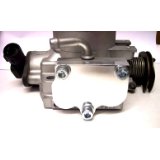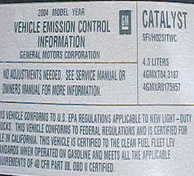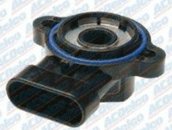On older vehicles idle speed problems are common. Learn how to set base idle on cars from the 80’s and 90’s below. The complaints can be a low engine idle that might be causing a stalling condition at times. There can also be a complaint of high or fluctuating engine RPMs with your foot off the accelerator.

throttle plate
In a fuel injected computer-controlled situation idle speed is being regulated by controlling the amount of air that is allowed to enter the engine with the throttle plates closed. Some engineering types would call this a calculated vacuum leak. If you’re idle speed problem is a stalling condition when coming to a stop, start by looking for the obvious problems like vacuum leaks from deteriorated gaskets or broken vacuum hoses and lines. On vehicles from the 80s and 90s many were equipped from the factory with plastic vacuum line that joined a small rubber hose where it was then mounted onto a vacuum fitting of varying types.
Now that these vehicles are 20 years old these plastic vacuum lines are extremely brittle and it doesn’t take much to break them. Also note that rubber doesn’t last forever and in some cases very thin or poor quality rubber was used on these cars from the 80s and 90s. Basically the older your vehicle is the more chance that an idle speed problem could be caused by a vacuum line that has broken.
Adjusting base idle speed

emission label
If everything checks out and you don’t have any broken vacuum lines or any intake manifold gasket leaks, it is possible that a
throttle body service and a resetting of the base idle could be necessary. Again this is more likely on older vehicles as with more modern vehicles they have the ability to compensate for both a dirty throttle body and idle speed in general.
On vehicles from the 80s and 90s you will find instructions listed on the emissions decal that explains the necessary conditions that must be met prior to attempting an idle adjustment. On older GM vehicles for example, the vehicle is placed in a diagnostic mode that extends the IAC motor to its outward limit. The IAC motor is then disconnected and the diagnostic mode exited in that order. Now when the vehicle is started it is on the base idle setting which at this point can be adjusted.
Expert Auto Repair Tip: Take it from someone who knows...Having the
online repair manual is a life-saver when it comes to DIY auto repair and maintenance. Whether you are working on a
Ford,
BMW,
Dodge, or something more exotic; we probably have the manual you need.

TPS Sensor
If you cannot read the emissions label anymore then I recommend you get a service manual for your specific vehicle because these procedures vary greatly throughout year’s makes and models. Some manufacturers will require the removal of metal plugs to gain access to adjustment screws. Other vehicle manufacturers require an adjustment of the other throttle position sensor in conjunction with the base idle setting.
If you find an adjustment screw on the throttle plates turning it without following the procedure will not accomplish anything. This is because the computer is designed to adjust idle speed and keep it in a specific range. If you’re not in the setup mode the adjustment will not hold.
If you just want to set you’re idle and you are looking for professional help with that task visit the help with car repair page. There you will be able to connect with technicians that are familiar with your specific year make and model. For more free auto repair articles this next link will take you back to the homepage from this page about idle speed problems.









